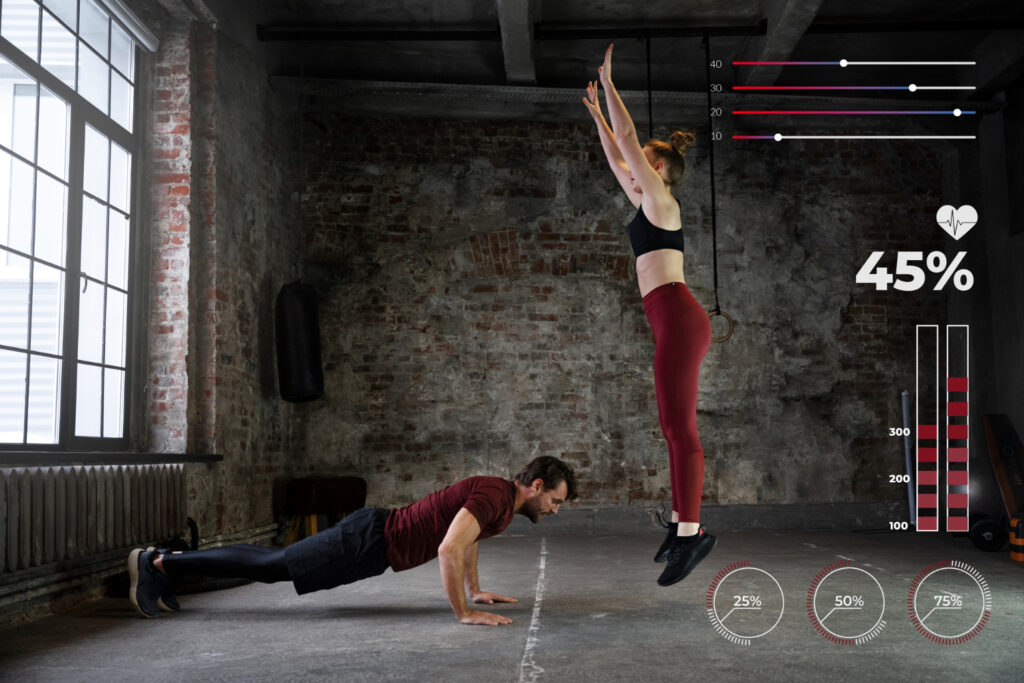High-intensity interval training (HIIT) has become a fitness superstar in recent years. This workout style is known for its effectiveness in burning calories, building muscle, and boosting overall fitness in a shorter amount of time compared to traditional cardio. But what exactly is HIIT, and how can you incorporate it into your routine? This guide will provide you with everything you need to know about HIIT, from its benefits and different types to creating your own HIIT workouts and safety considerations.
What is HIIT?
HIIT is a training technique that alternates short bursts of intense exercise with periods of rest or low-intensity activity. The key to HIIT is pushing yourself to near-maximal effort during the work intervals. This high intensity elevates your heart rate and challenges your muscles, leading to a variety of fitness benefits.
Here’s a breakdown of the basic HIIT structure:
- Work Intervals: These are the periods of intense activity where you push yourself to give your maximum effort. This could be sprinting, jumping squats, or any exercise you can perform at a very high intensity.
- Rest Intervals: These periods allow your body to recover slightly before the next burst of exertion. You might jog in place, walk, or simply take deep breaths during rest intervals.
The ratio of work to rest intervals can vary depending on the specific HIIT workout you choose. Common HIIT protocols include:
- Tabata: 20 seconds work, 10 seconds rest (repeated for 8 rounds)
- 30/30: 30 seconds work, 30 seconds rest (repeated for 10 rounds)
- 1 minute work, 2 minute rest: This is a good option for beginners
Benefits of HIIT
HIIT offers a wide range of benefits for people of all fitness levels. Here are some of the key reasons to consider including HIIT in your workout routine:
- Boosts Metabolism: HIIT elevates your metabolic rate for up to 24 hours after your workout, meaning your body burns more calories at rest. This is a significant advantage for weight loss and management.
- Improves Cardiovascular Health: HIIT strengthens your heart and improves your ability to deliver oxygen throughout your body. This can lead to better endurance and stamina.
- Builds Muscle: HIIT can help you build muscle, especially when combined with a healthy diet. Muscle tissue burns more calories at rest than fat tissue, further contributing to weight management.
- Time-Efficient: HIIT workouts are typically shorter than traditional cardio sessions, making them ideal for busy schedules. You can get a great workout in 20-30 minutes.
- Increased Overall Fitness: HIIT can improve various aspects of fitness, including speed, power, and agility.
Types of HIIT Workouts
The beauty of HIIT is its versatility. You can incorporate HIIT principles into almost any type of exercise, including:
- Running: Alternate between sprinting intervals and jogging or walking recovery periods.
- Bodyweight Exercises: Create a circuit with exercises like jumping jacks, burpees, mountain climbers, and lunges, performing them at high intensity with short rest periods.
- Cycling: Alternate between high-resistance pedaling and coasting or low-resistance cycling.
- Swimming: Do alternating sets of sprints, drills, or fast freestyle with periods of slower swimming or active rest.
There are also HIIT variations designed for specific goals, such as:
- Tabata: As mentioned earlier, Tabata is a specific HIIT protocol with a 20-second work, 10-second rest structure. It’s a great way to get a quick and intense workout.
- Plyometrics: Plyometric exercises involve jumping and explosive movements. HIIT workouts incorporating plyometrics can improve power and agility.
Creating Your Own HIIT Workout
Ready to give HIIT a try? Here’s how to create your own HIIT workout plan:
- Choose Your Exercises: Select exercises that you enjoy and that target different muscle groups.
- Decide on a Work/Rest Ratio: Beginners can start with a 30-second work, 30-second rest structure. As you get fitter, you can shorten the rest intervals or lengthen the work intervals.
- Plan Your Workout: Determine the total duration of your workout and the number of rounds you want to complete.
- Warm-Up: Before starting your HIIT workout, it’s crucial to warm up your muscles with 5-10 minutes of light cardio and dynamic stretches.
- Push Yourself: During the work intervals, aim for maximum effort. You should be breathing hard and feel challenged.
Safety Considerations with HIIT
HIIT is a powerful training method, but it’s important to prioritize safety. Here are some key points to remember:
- Listen to Your Body: Don’t push yourself to the point of pain or dizziness. Take rest days when needed, and don’t hesitate to modify exercises if something feels uncomfortable.
- Start Slowly: If you’re new to exercise, begin with shorter HIIT workouts and gradually increase the intensity and duration as your fitness improves.
- Focus on Form: Proper form is essential to prevent injury. Pay attention to your technique during each exercise, and don’t be afraid to lower the intensity if you can’t maintain good form.
- Warm-Up and Cool Down: Always perform a proper warm-up before your HIIT workout and a cool-down with static stretches afterward.
- Hydrate: Drink plenty of water before, during, and after your workout to stay hydrated.
- Consult a Doctor: If you have any underlying health conditions, consult with your doctor before starting HIIT to ensure it’s safe for you.
Sample HIIT Workout
Here’s a sample beginner-friendly HIIT workout that you can do at home with no equipment:
- Warm-up: 5 minutes of light cardio (jumping jacks, jogging in place) and dynamic stretches (arm circles, leg swings)
- Round 1:
- Jumping Jacks (30 seconds)
- Rest (30 seconds)
- High Knees (30 seconds)
- Rest (30 seconds)
- Squats (30 seconds)
- Rest (30 seconds)
- Round 2:
- Lunges (30 seconds per leg)
- Rest (30 seconds)
- Mountain Climbers (30 seconds)
- Rest (30 seconds)
- Plank (30 seconds)
- Rest (30 seconds)
- Cool-down: 5 minutes of static stretches (hold each stretch for 15-30 seconds)
This is just a sample workout. You can adjust the exercises, work/rest intervals, and number of rounds to fit your fitness level and goals. There are also many free HIIT workout videos available online that you can follow along with.
You can also read : The Best Cardio Exercises: A Comprehensive Guide
Conclusion
HIIT is a fantastic way to boost your fitness level, burn calories, and save time. By incorporating High-intensity interval training (HIIT) workouts into your routine, you can achieve significant results in a shorter amount of time compared to traditional cardio. Remember to listen to your body, start slowly, and prioritize safety to get the most out of your HIIT experience. So lace up your shoes, put on some motivating music, and get ready to experience the power of High-intensity interval training (HIIT)!



